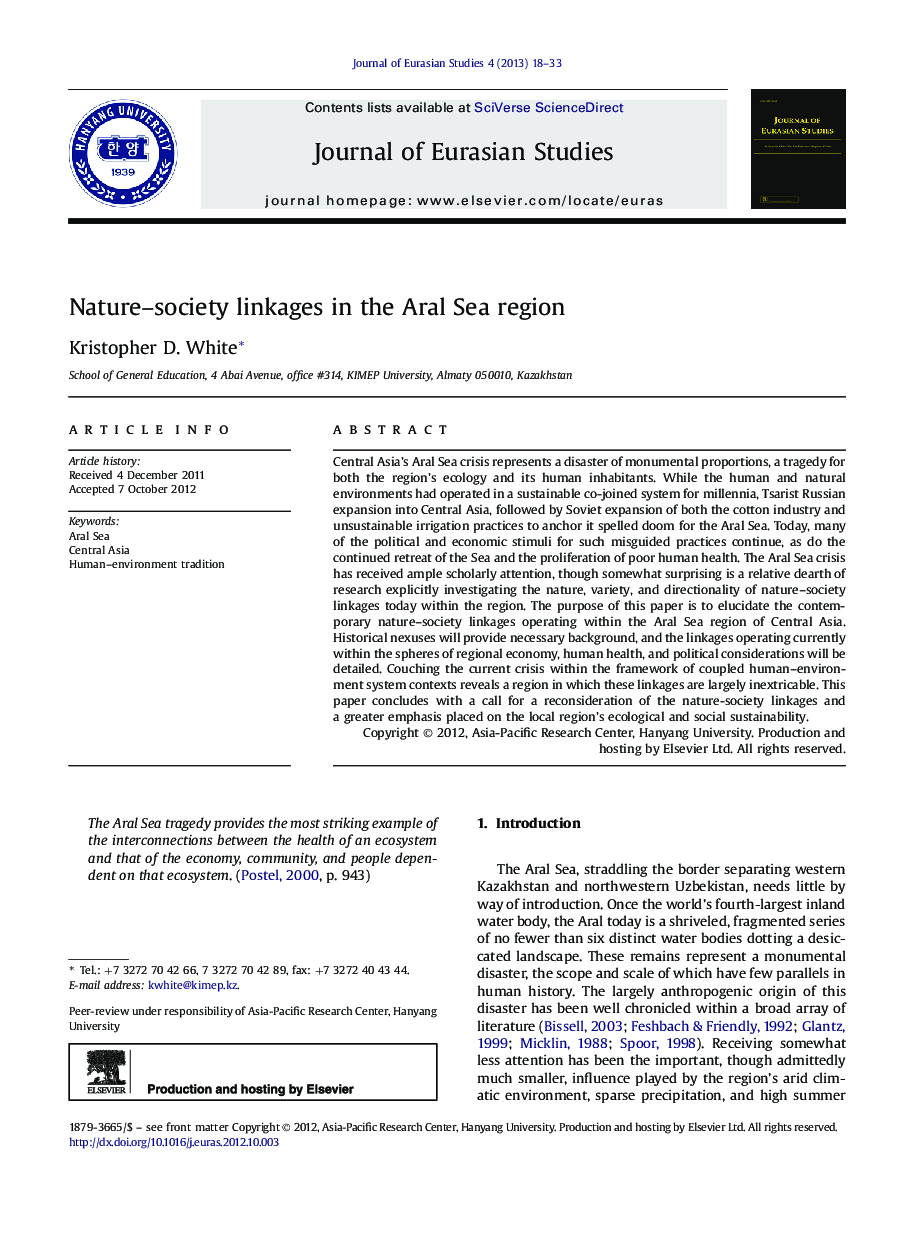| Article ID | Journal | Published Year | Pages | File Type |
|---|---|---|---|---|
| 1127272 | Journal of Eurasian Studies | 2013 | 16 Pages |
Central Asia's Aral Sea crisis represents a disaster of monumental proportions, a tragedy for both the region's ecology and its human inhabitants. While the human and natural environments had operated in a sustainable co-joined system for millennia, Tsarist Russian expansion into Central Asia, followed by Soviet expansion of both the cotton industry and unsustainable irrigation practices to anchor it spelled doom for the Aral Sea. Today, many of the political and economic stimuli for such misguided practices continue, as do the continued retreat of the Sea and the proliferation of poor human health. The Aral Sea crisis has received ample scholarly attention, though somewhat surprising is a relative dearth of research explicitly investigating the nature, variety, and directionality of nature–society linkages today within the region. The purpose of this paper is to elucidate the contemporary nature–society linkages operating within the Aral Sea region of Central Asia. Historical nexuses will provide necessary background, and the linkages operating currently within the spheres of regional economy, human health, and political considerations will be detailed. Couching the current crisis within the framework of coupled human–environment system contexts reveals a region in which these linkages are largely inextricable. This paper concludes with a call for a reconsideration of the nature-society linkages and a greater emphasis placed on the local region's ecological and social sustainability.
